GeForce RTX 3090
Earlier this month, I upgraded my primary Windows PC, which I documented in the following two articles:
I did not immediately upgrade my old Nvidia GeForce RTX 2080 Ti. The Nvidia GeForce RTX 3000 Series graphics cards look great, however, with COVID-19 supply chain issues and the current cryptocurrency boom, availability and pricing have been a nightmare (with no end in sight).
For example, the Nvidia GeForce RTX 3080 Founders Edition (FE) has an RRP of £649.00, but can rarely be found for less than £1500.00. The same can be said for AIB graphics cards, with the cheapest GeForce RTX 3080 RRP being £899.99 (with no availability).
With that said, if you have the right network (and a bit of luck), it is possible to secure these cards at RRP.
I recently purchased the Nvidia GeForce RTX 3090 Founders Edition (FE), which at RRP costs £1399.00, but is frequently sold for more than £2000.00.
It should be noted, although positioned as such, I do not consider the GeForce RTX 3090 a pure gaming graphics card. Nvidia calls it a “Big Ferocious GPU (BFGPU)”, featuring 24GB GDDR6X memory, which makes it equivalent to a “TITAN-class” graphics cards, used for professional workloads (e.g. Machine Learning, Video Editing, etc.)
The GeForce RTX 3090 FE is a monstrous graphics card in every sense of the word. The specification pushes every limit and the dimensions of the card are like nothing I have worked with before.
A summary of the GeForce RTX 3090 FE specification can be found below:
- Architecture Family: Ampere
- Architecture: GA102
- Process Technology: Samsung 8N
- Transistors: 28.3 Billion
- Streaming Multiprocessors: 82
- NVIDIA CUDA Cores: 10496
- Tensor Cores: 328
- RT Cores: 82
- Base Clock: 1.4GHz
- Boost Clock: 1.7GHz
- Memory: 24GB GDDR6X
- Memory Speed: 19.5Gbps
- Memory Interface: 384bit
- Maximum Digital Resolution: 7680x4320 (8K)
- Display Connectors: HDMI 2.1 and 3x DisplayPort 1.4a
- Power Requirement: 350W (Recommended 750W PSU)
- Power Connectors: 1x 12-pin (Equal to 2x PCI-e 8-pin)
The GeForce RTX 3090 pushes the GA102 chip to its limit, utilising 82 of the potential 84 Streaming Multiprocessors, which is up from 68 on the GeForce RTX 3080 (also based on GA102).
The image below highlights the architecture.
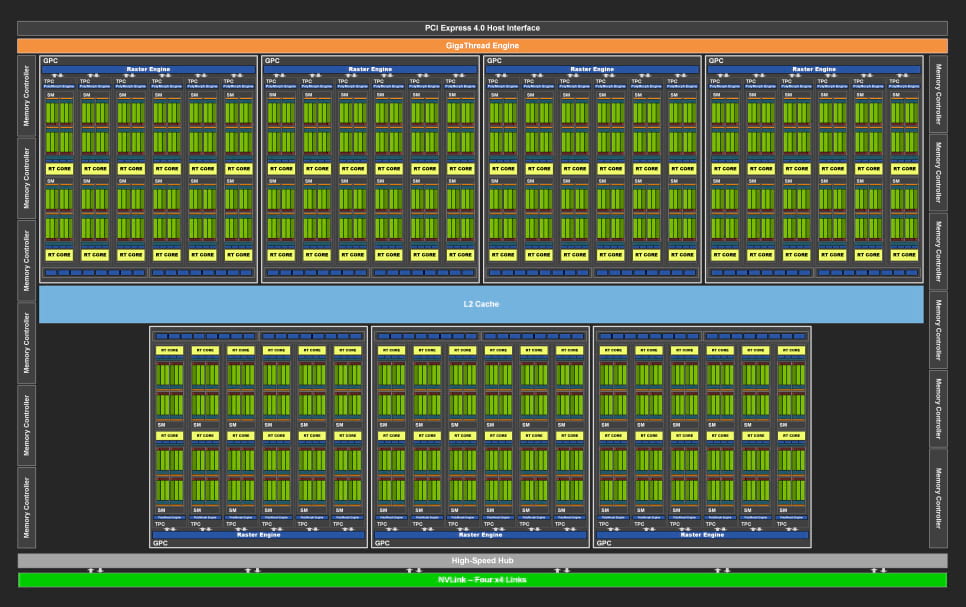
The dimensions of the graphics card are equality impressive, requiring three full slots. The specific dimensions and weight can be found below.
- Length: 313mm (12.3-inch)
- Width: 138mm (5.4-inch)
- Weight: 2189g (4.82pounds)
I always considered my GeForce RTX 2080 Ti a large graphics card, but the GeForce RTX 3090 FE makes it look small.
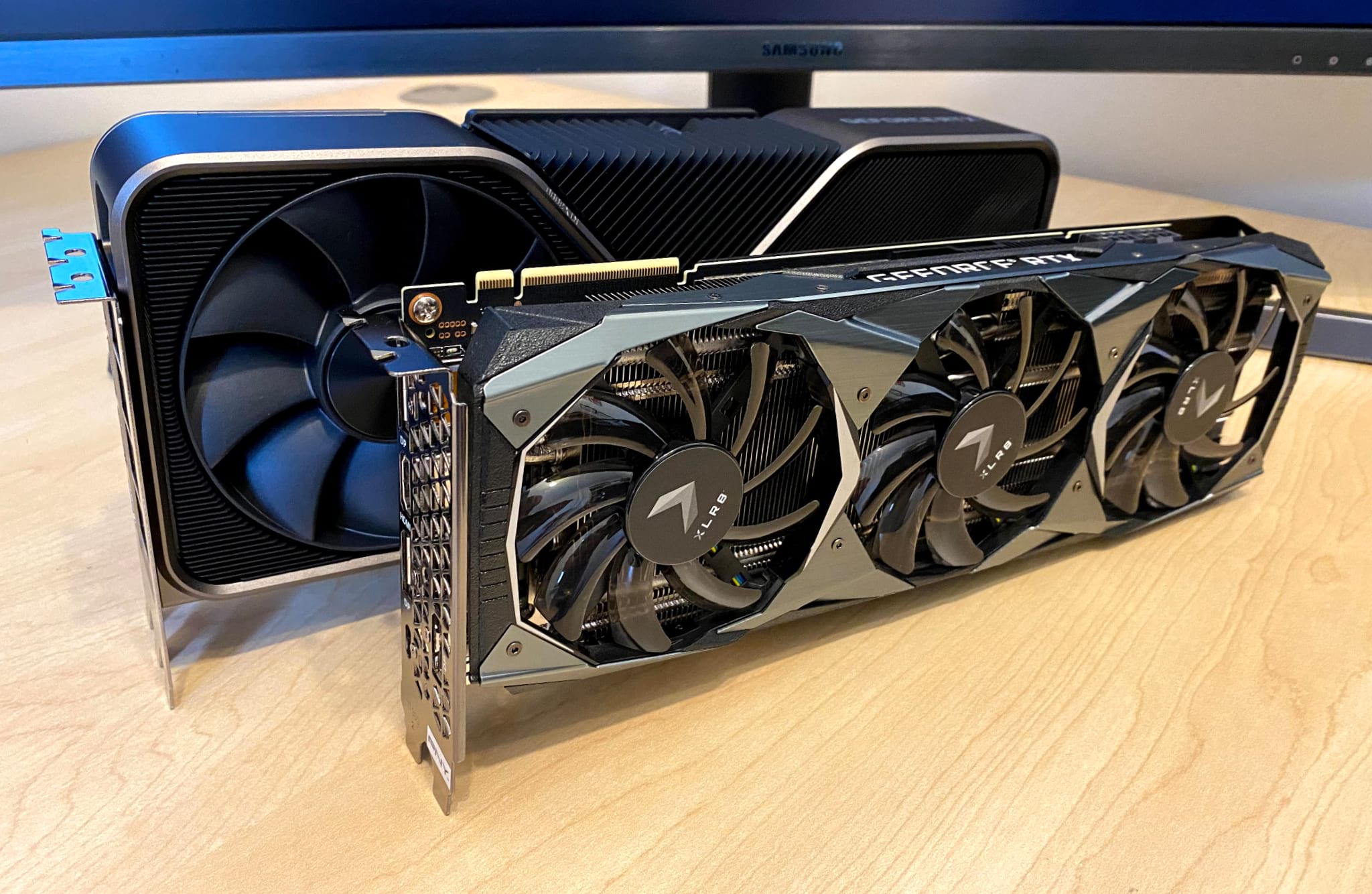
I have included a selection of photos below highlighting the GeForce RTX 3090 FE.
The first photo shows the retail box, which like other Nvidia products, feels high quality and delivers an excellent “unboxing” experience.
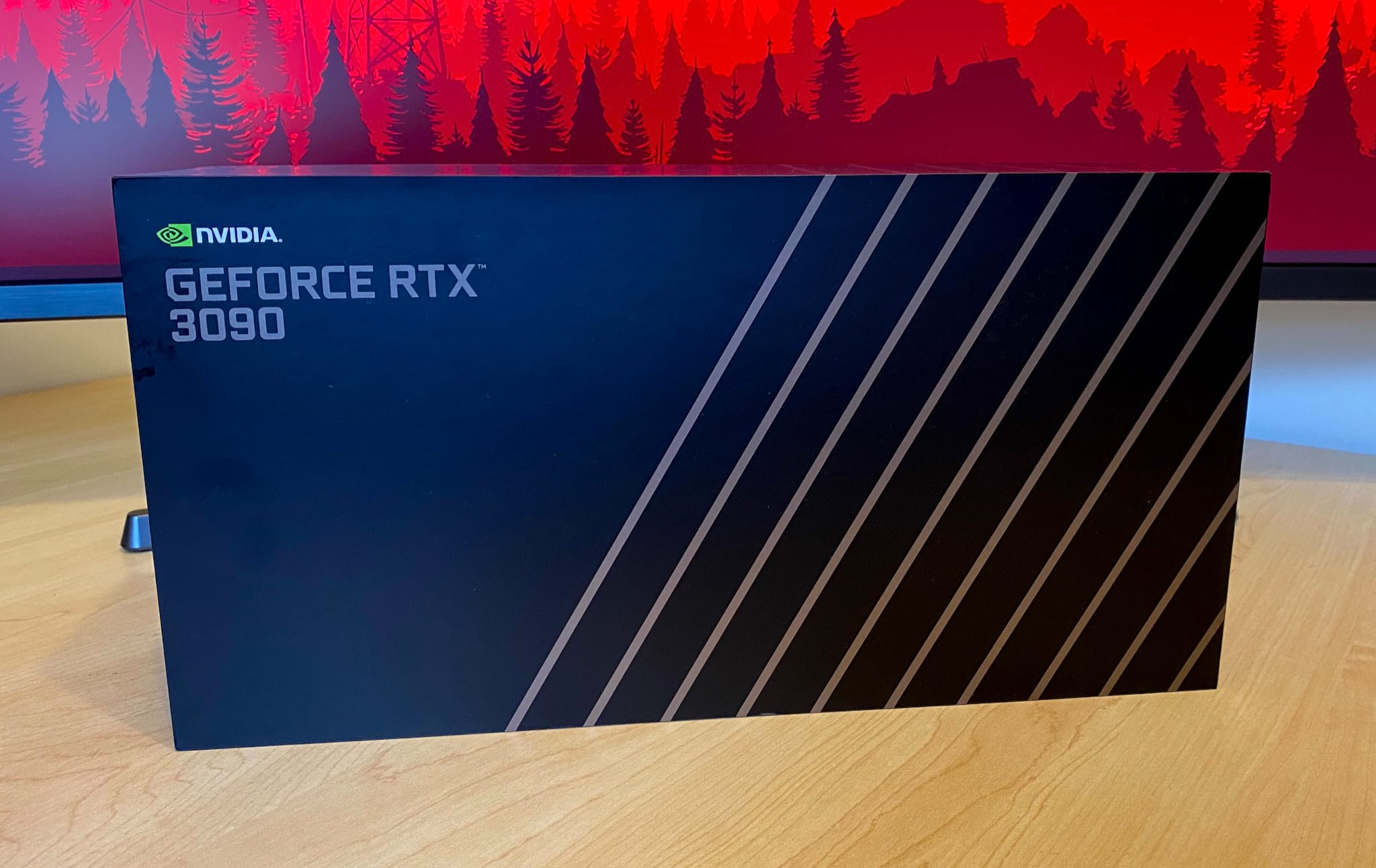
With the lid removed, the box essentially acts as a presentation stand for the graphics card. You can also see the rear 110mm fan, which has the fins angled to pull air through the radiator.
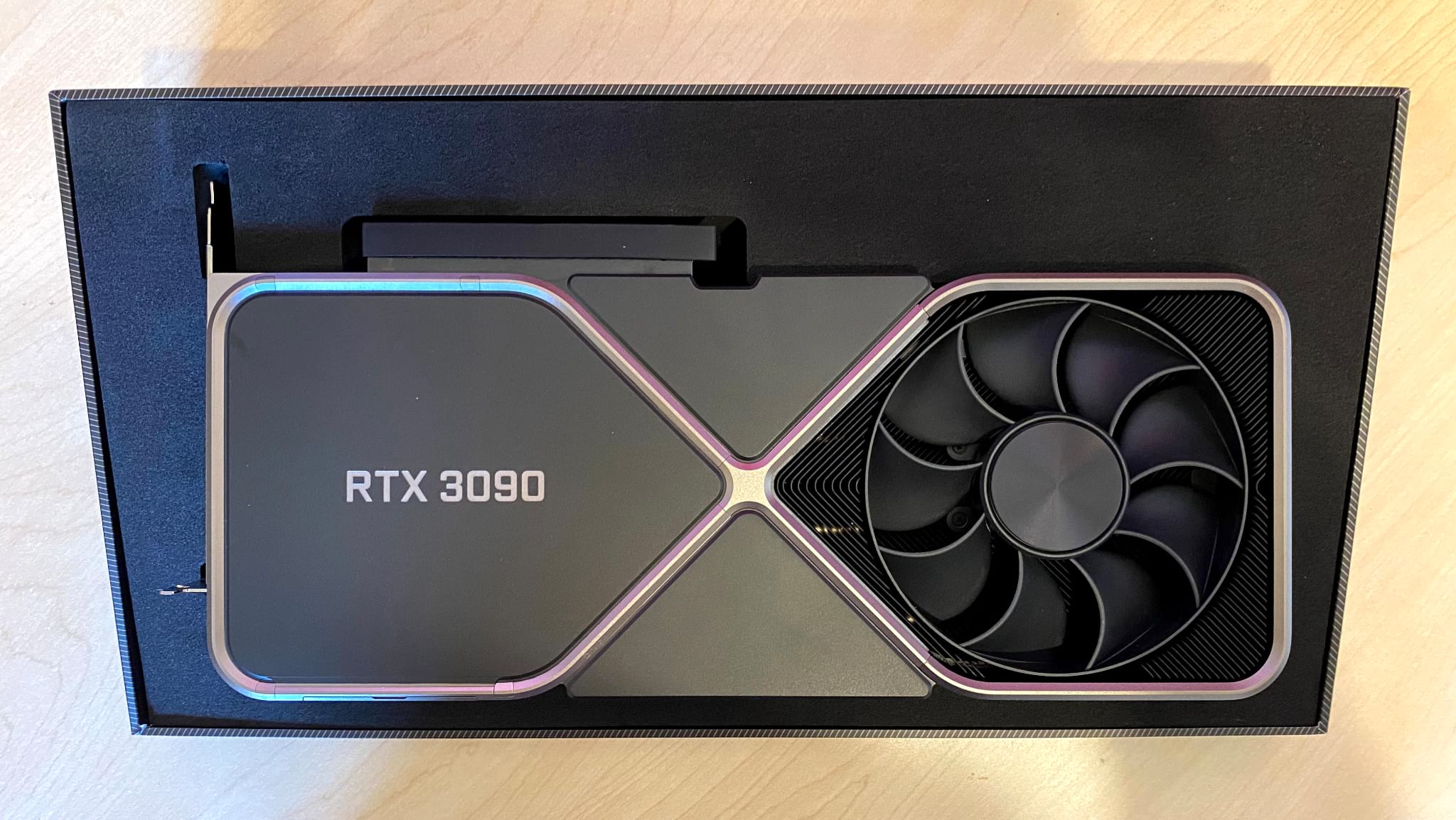
With the graphics card unboxed, you can see the front 110mm fan, which pushes air out of the rear three-slot exhaust.
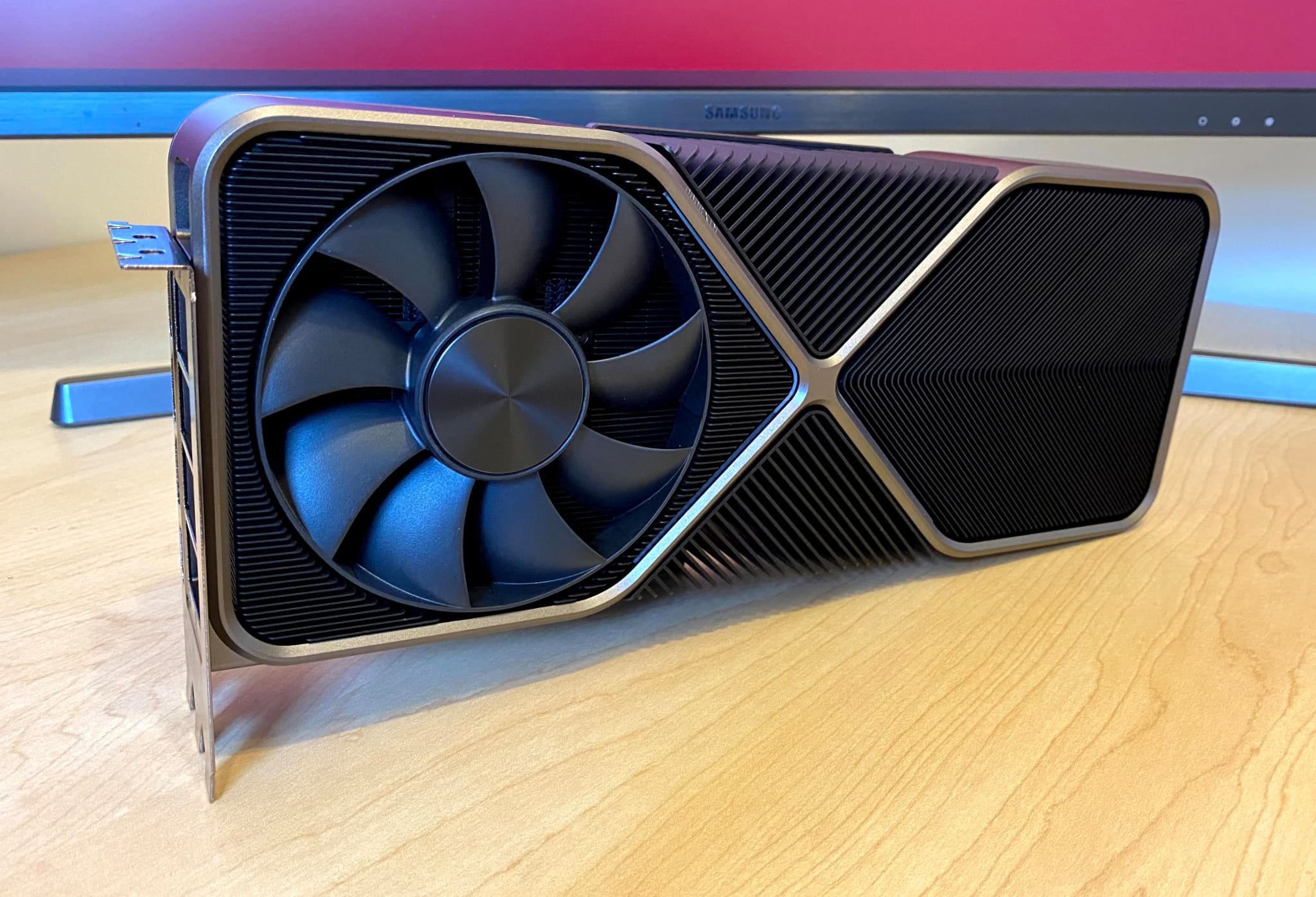
The photo below shows a closer view of the rear three-slot exhaust and fan, which are larger than anything I have seen before on a graphics card.
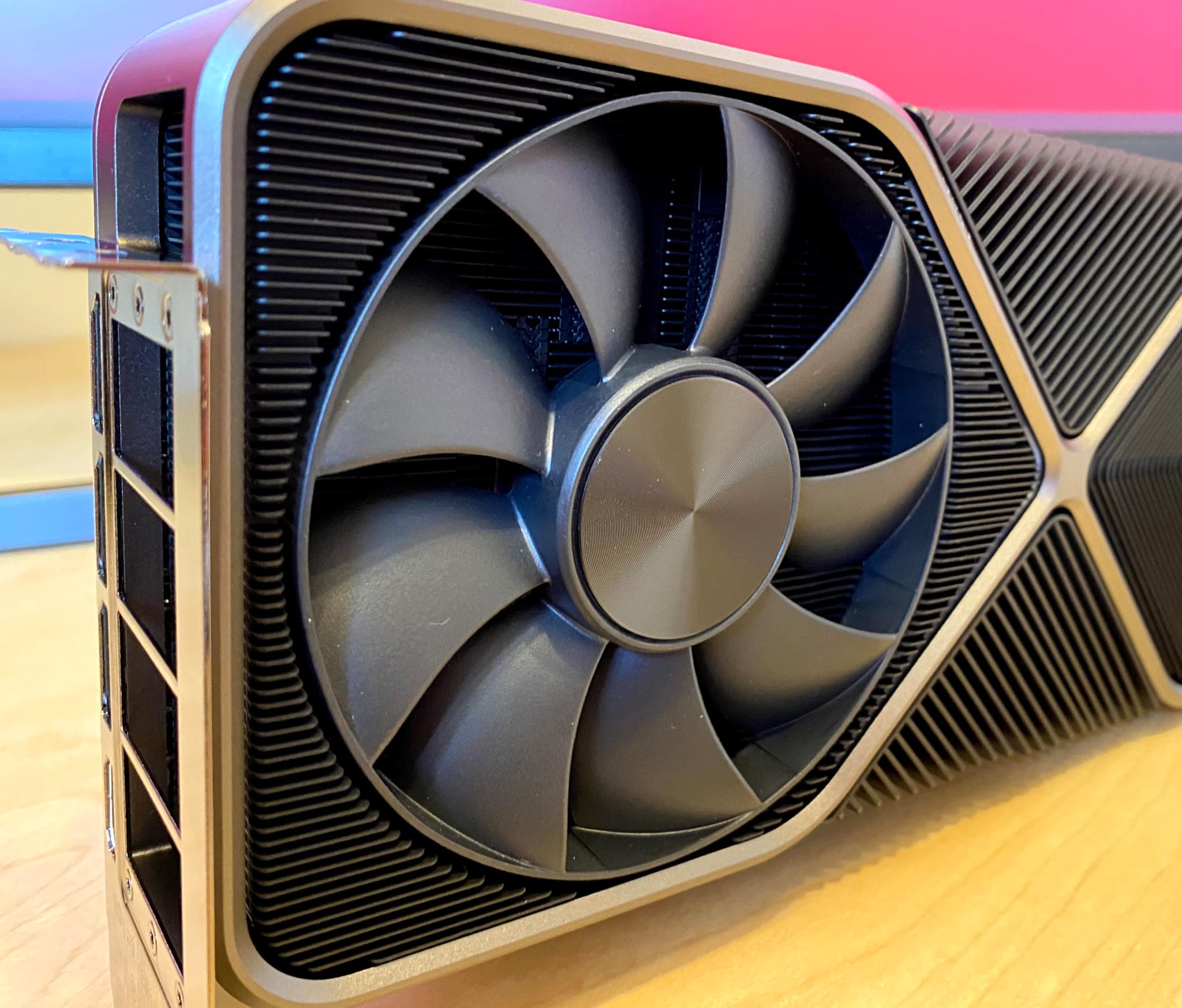
The GeForce RTX 3090 FE includes a unique cooling design, which aims keeps noise to a minimum (48.9 dB under load) by leveraging large fans to exhaust hot air through the rear of the case.
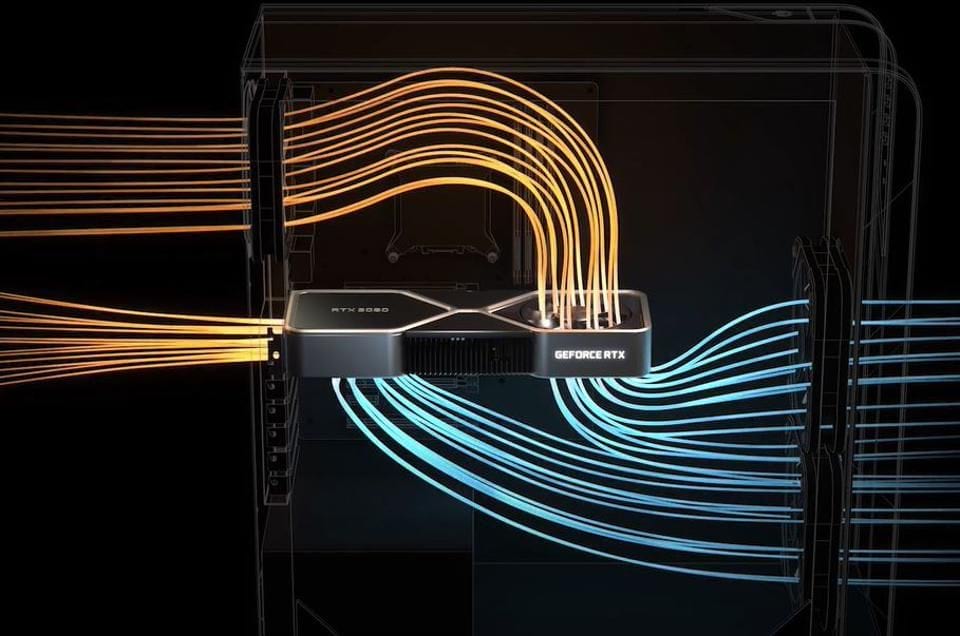
This approach works well with my setup, as I have positioned my fans to pull cool air from the front, running over the system components, before being push out of the rear.
The only watch-out is the internal fan on the GeForce RTX 3090 FE, which will likely blow warmer air over the CPU heatsink. It will be interesting to see if this design has an impact on my CPU temperature.
The GeForce RTX 3090 FE includes a new 12-pin power connector, which is smaller and more convenient than the old two 8-pin connectors. However, at this time, very few power supply units include this connector, therefore an adapter required (not ideal).
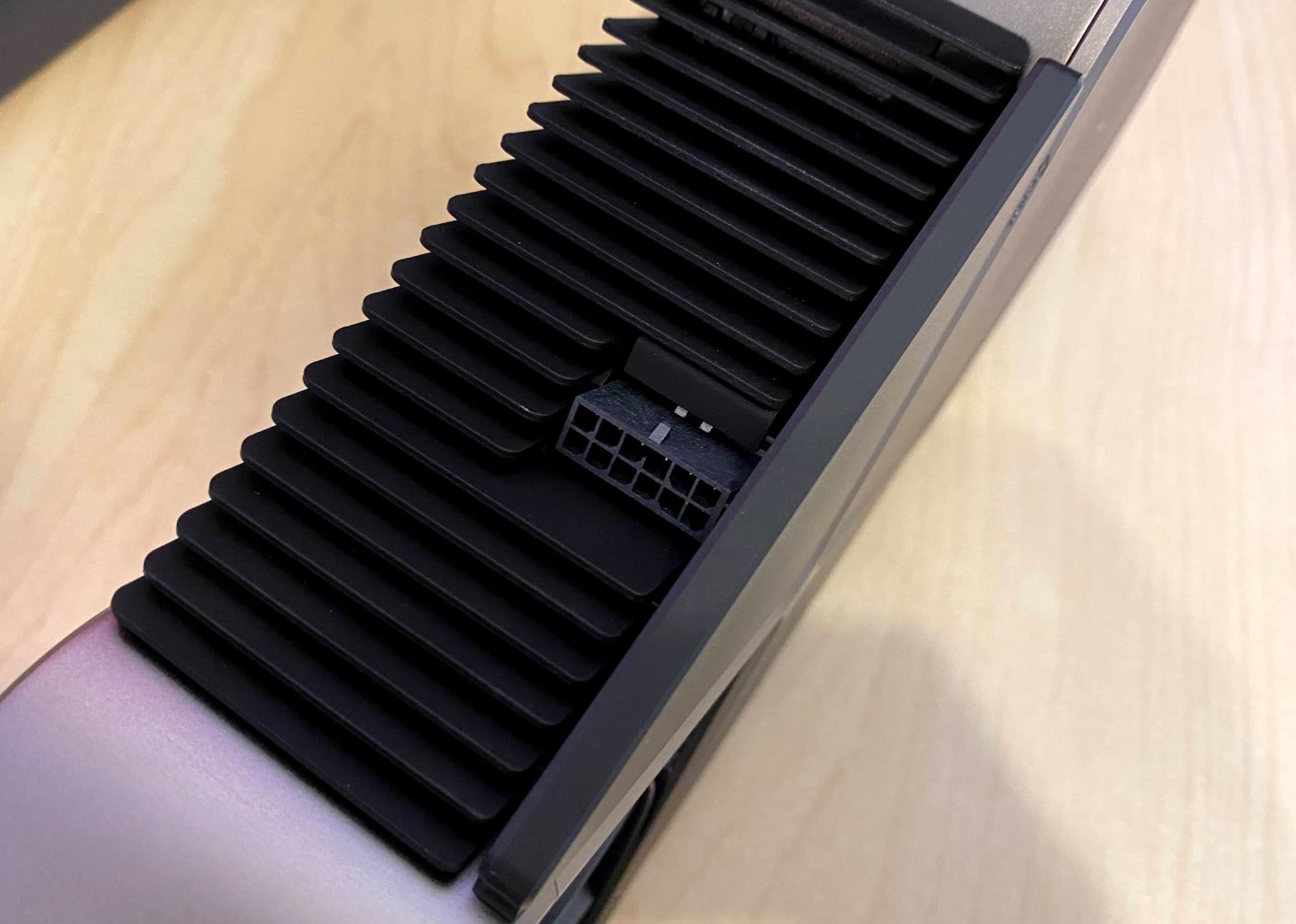
Thankfully, Nvidia does include the adapter in the box, therefore any (good quality) 750W power supply unit with two 8-pin connectors should be fully compatible.
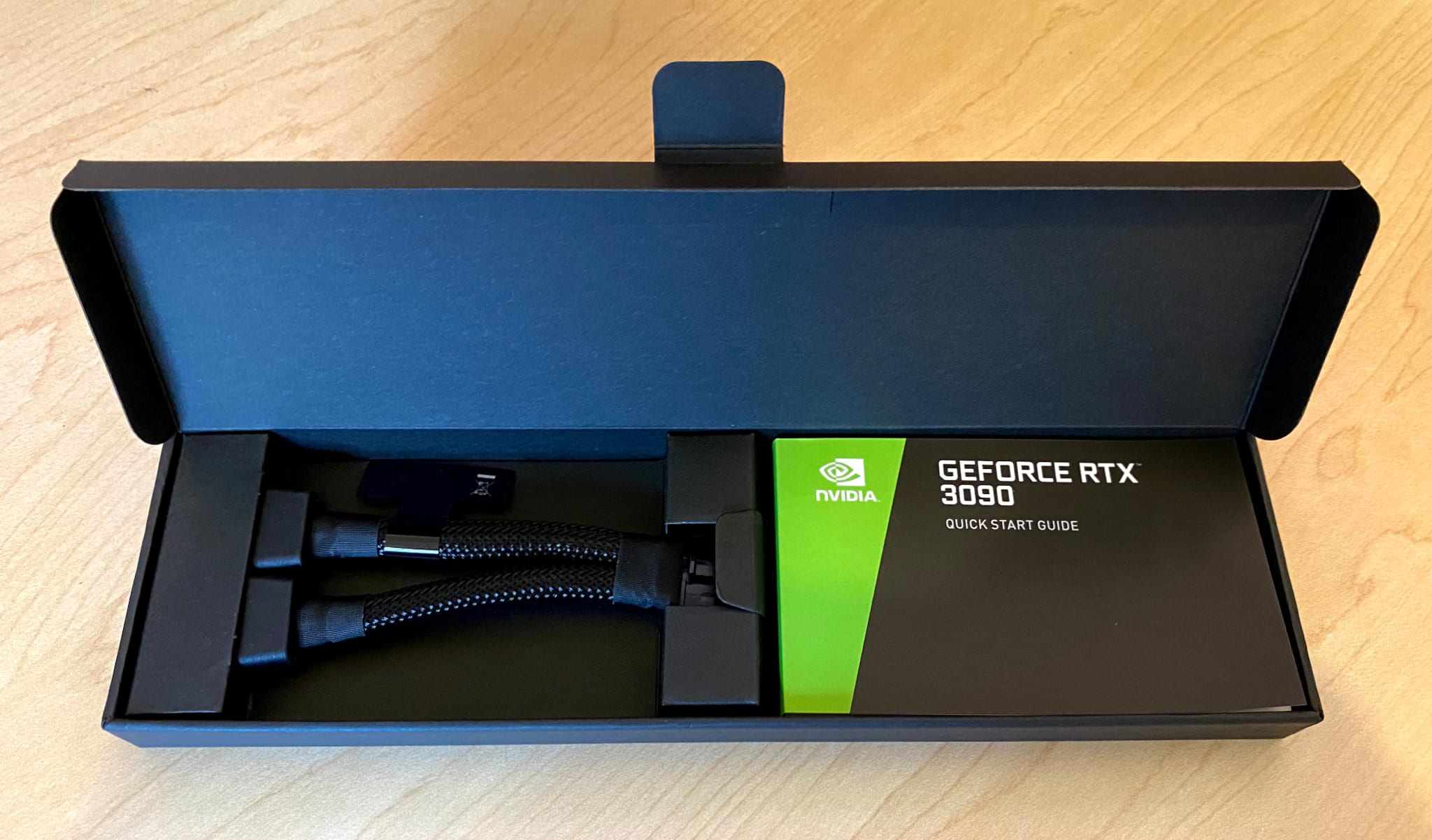
The final photo shows the GeForce RTX 3090 FE installed, highlighting the size and unsightly power adopter.
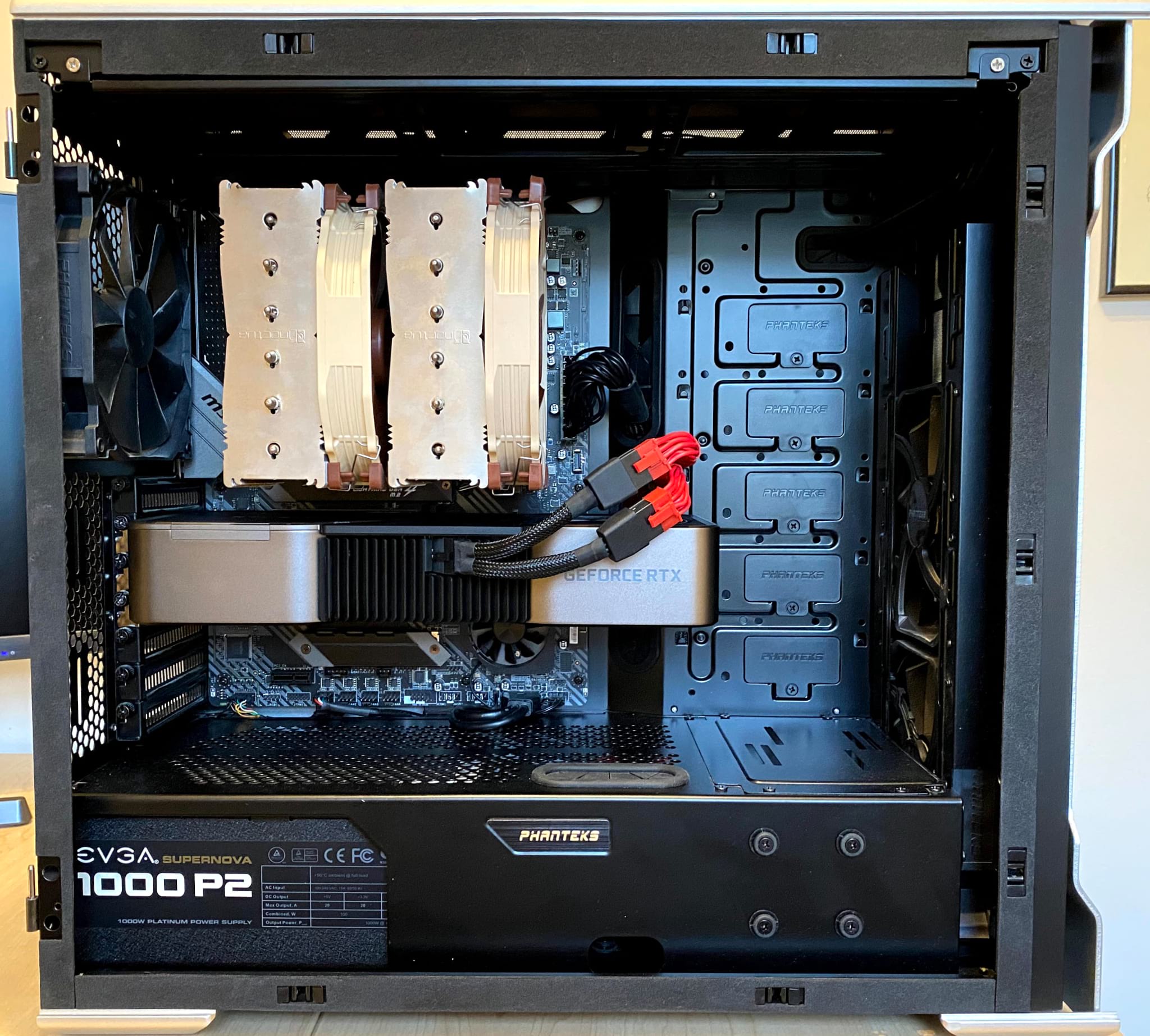
I am pleased to report that my Phanteks Enthoo Evolv ATX Mid Tower Case continues to serve me well, with plenty of room to support the large dimensions of the GeForce RTX 3090 FE.
Regarding performance, the GeForce RTX 3090 FE is unsurprisingly a beast, delivering a significant performance boost over my old GeForce RTX 2080 Ti.
I haven’t had the opportunity to test every workload, but I suspect with this much power, the GeForce RTX 3090 FE will deliver previously unseen performance. Although not the best test (due to the low resolution), the screenshot below highlights my 3DMark Time Spy result.
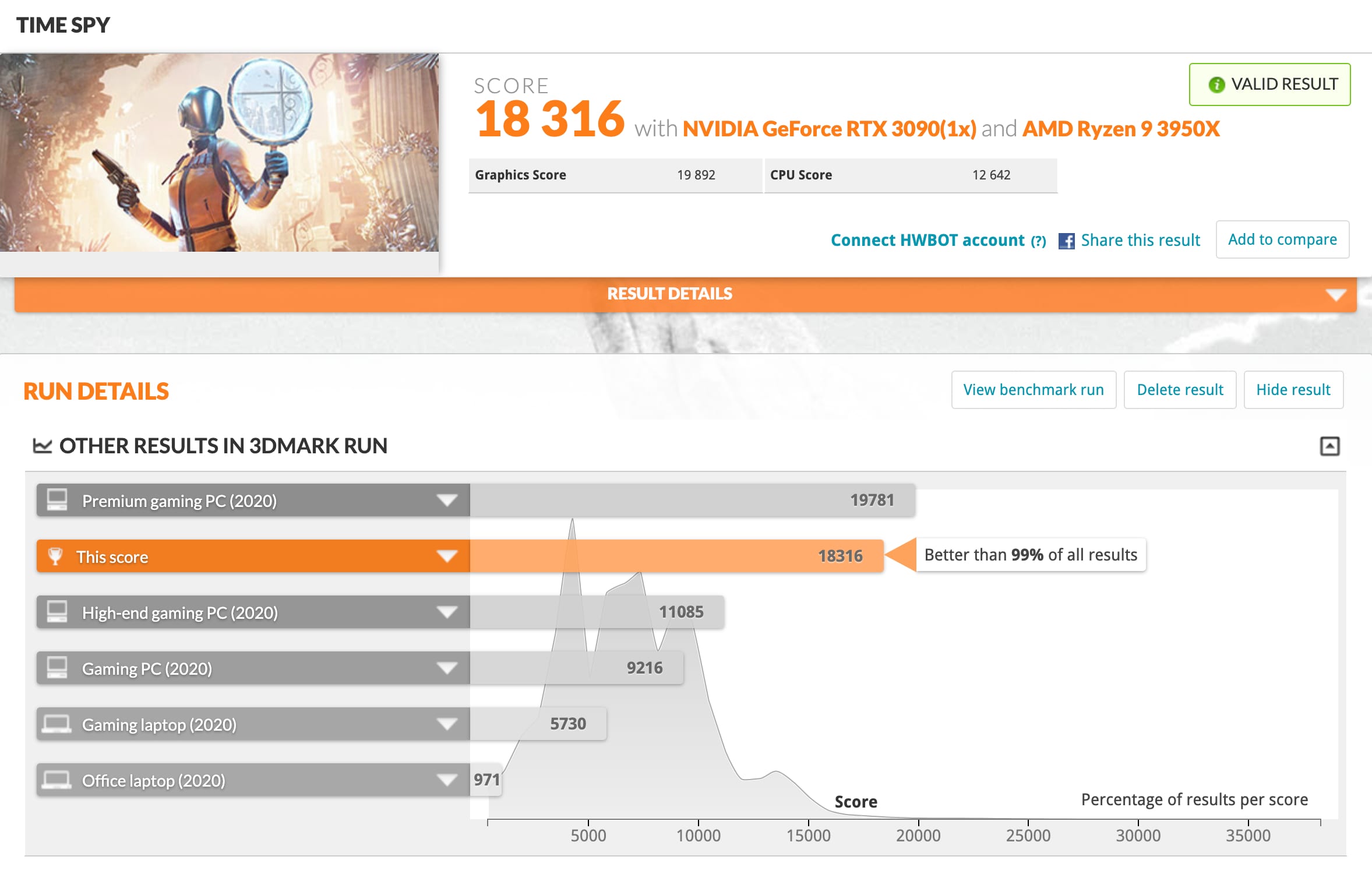
This score compares well against equivalent systems in the UK, ranking within the top 50% (just over average).
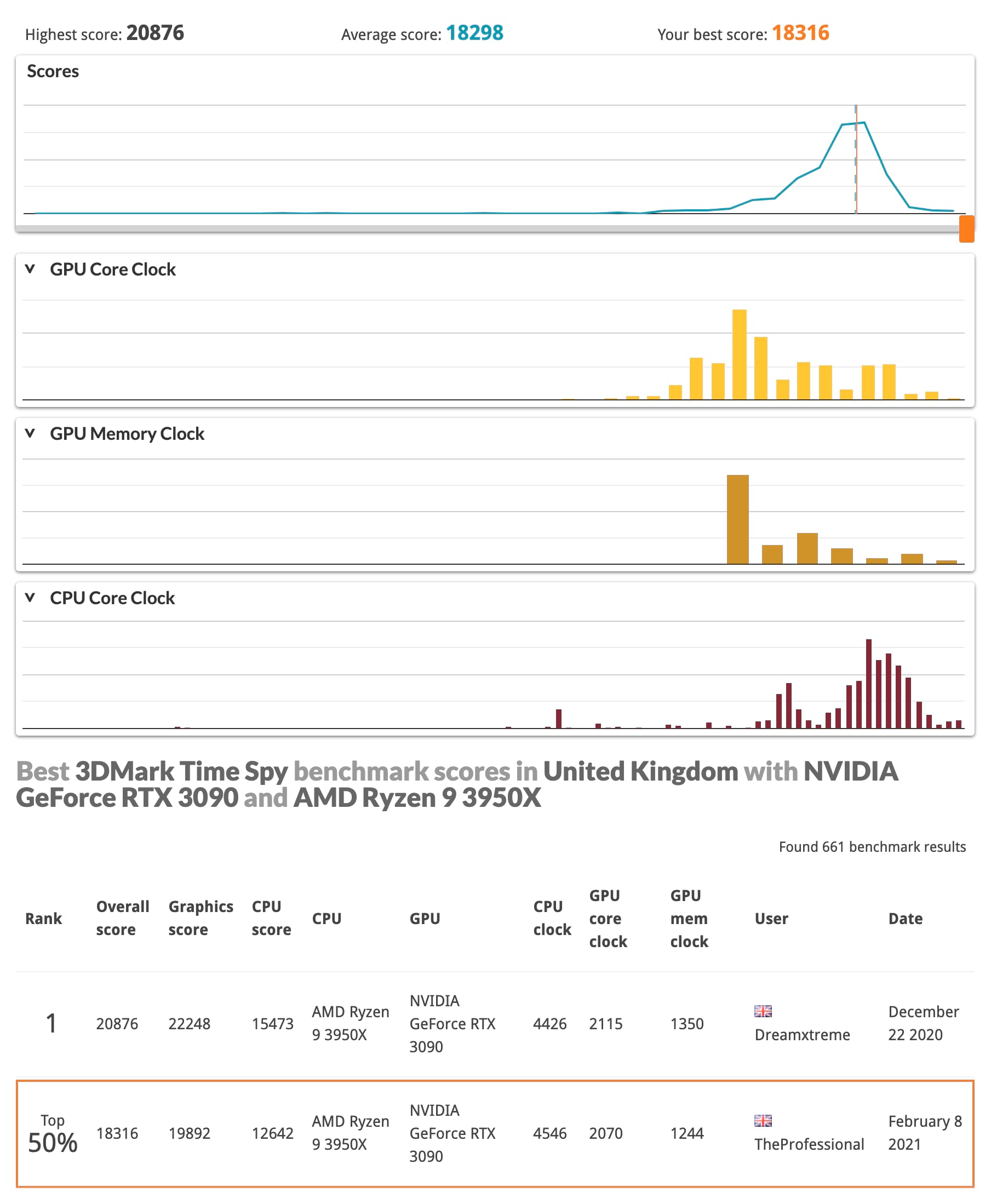
Recognising these are 24x7 stable settings, running with air cooling, without any extreme overclocking, custom bios or voltage modifications, I am pleased with the results.
Over the coming weeks, I plan to put the GeForce RTX 3090 through its paces across a range of workloads, specifically applications that can showcase the raw horsepower (streaming multiprocessors) and utilise the 24GB GDDR6X memory.